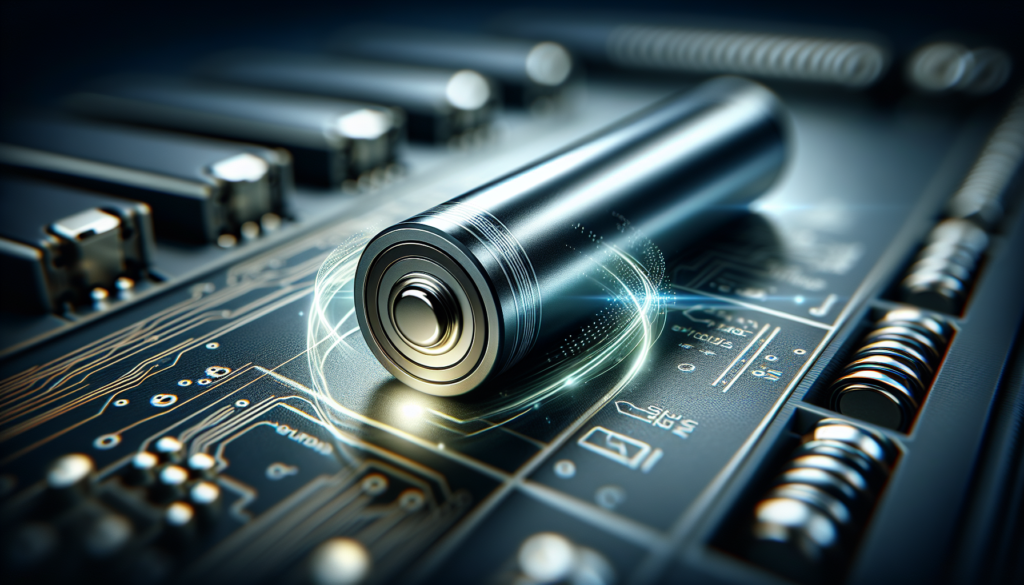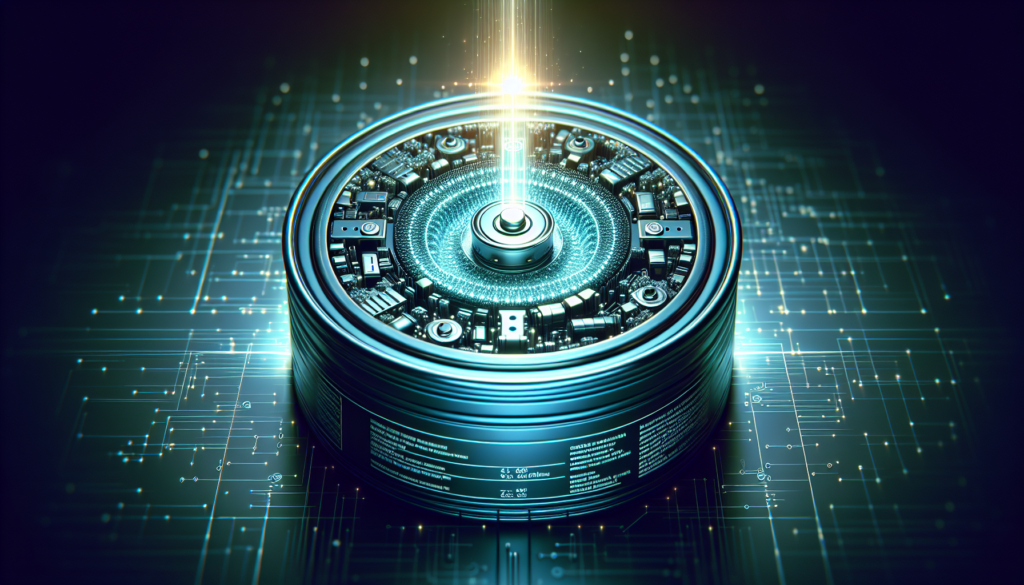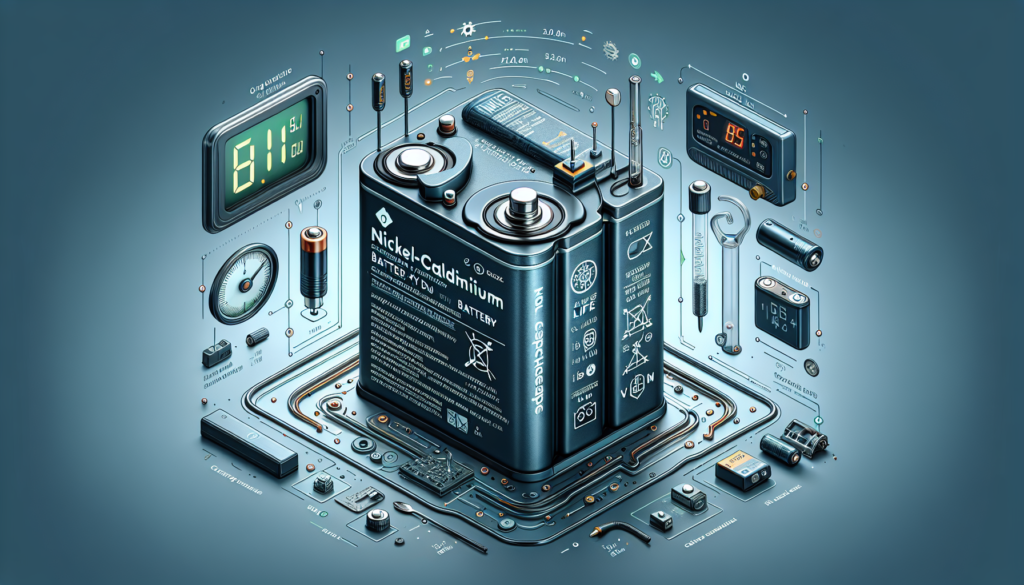Imagine a world without the hassle of constantly charging your devices, where battery life is vastly extended, allowing you to go about your day worry-free. Well, with the revolutionary technology of Lithium-Ion (Li-ion) batteries, this dream is becoming a reality. Li-ion batteries have transformed the way we power our smartphones, laptops, and electric vehicles, providing a reliable and long-lasting energy source. In this article, we will explore the incredible benefits and advancements of Li-ion batteries, from their lightweight design to their ability to store an impressive amount of energy. Get ready to be amazed by the incredible power of Li-ion batteries!
History of Lithium-Ion Batteries
Lithium-ion batteries have become an integral part of our modern lives, powering everything from our smartphones to electric vehicles. But where did these batteries come from? The history of lithium-ion batteries can be traced back to the early 1970s when researchers at the University of Texas and Oxford University made significant discoveries in the field of rechargeable batteries.
Early Developments
In the early stages of development, lithium-ion batteries faced numerous challenges such as high costs, safety concerns, and limited availability of resources. However, in the 1980s, Dr. John B. Goodenough and his team at the University of Texas made a groundbreaking discovery by using lithium cobalt oxide as the cathode material. This discovery led to the development of the first commercially viable lithium-ion battery.
Commercialization and Advancements
Throughout the 1990s, major companies started investing in the commercialization of lithium-ion batteries. Sony Corporation was one of the pioneers in this field and introduced the first commercial lithium-ion battery in 1991. This battery revolutionized the consumer electronics industry by providing a lightweight and compact power source for devices such as camcorders and laptops.
Over the years, advancements in battery technology led to improvements in energy density, cycle life, and safety measures. Research and development efforts focused on exploring different electrode materials and optimizing the overall design of lithium-ion batteries.
Modern Applications
Today, lithium-ion batteries have found widespread applications in various industries. From smartphones and tablets to electric vehicles and renewable energy storage systems, these batteries have become the preferred choice due to their high energy density and long cycle life. As technology continues to advance, lithium-ion batteries are expected to play an even more significant role in our daily lives.
Structure of Lithium-Ion Batteries
To understand how lithium-ion batteries work, it is essential to understand their structure. Lithium-ion batteries consist of several key components that work together to store and release energy efficiently.
Positive Electrode (Cathode)
The positive electrode, also known as the cathode, is a crucial component of lithium-ion batteries. It is typically made of a lithium metal oxide compound, such as lithium cobalt oxide or lithium manganese oxide. The cathode facilitates the movement of lithium ions during the charge and discharge process.
Negative Electrode (Anode)
The negative electrode, or anode, is usually made of carbon-based materials, such as graphite. It acts as the host for lithium ions during the charge and discharge process. When the battery is charged, the lithium ions are stored in the anode, and when the battery is discharged, they move back to the cathode.
Separator
The separator plays a critical role in preventing short circuits within the battery. It is a thin, porous material that separates the positive and negative electrodes, allowing the flow of lithium ions while preventing the direct contact between the two electrodes.
Electrolyte
The electrolyte is a conductive medium that enables the movement of lithium ions between the cathode and anode. It is typically a lithium salt dissolved in an organic solvent or a solid polymer. The electrolyte must be capable of facilitating ion movement while remaining stable and non-flammable.
Current Collectors
The current collectors are metallic foils that ensure the flow of electrons within the battery. One collector is connected to the cathode, while the other is connected to the anode. These collectors allow for the transfer of electrons between the battery and external devices.

Working Principle of Lithium-Ion Batteries
Understanding the working principle of lithium-ion batteries is essential to comprehend their capabilities and limitations.
Charge and Discharge Process
The charge and discharge process of lithium-ion batteries involve the movement of lithium ions between the cathode and anode. During the charging process, an external energy source is used to drive the lithium ions from the cathode to the anode. This process is reversed during discharge, where the stored lithium ions move from the anode to the cathode, releasing energy in the process.
Ion Movement
The movement of lithium ions within the battery occurs through the electrolyte and separator. When the battery is charged, the lithium ions move from the positive electrode through the electrolyte and separator to the negative electrode. During discharge, the lithium ions move in the opposite direction, from the negative electrode to the positive electrode.
Redox Reactions
Redox reactions play a crucial role in the charge and discharge process of lithium-ion batteries. When the battery is discharged, the positive electrode undergoes oxidation, releasing lithium ions and electrons. At the same time, the negative electrode undergoes reduction, taking up the released lithium ions and electrons. This process is reversed during charging, with the positive electrode undergoing reduction and the negative electrode undergoing oxidation.
Advantages of Lithium-Ion Batteries
Lithium-ion batteries offer numerous advantages over other types of rechargeable batteries, making them the preferred choice for many applications.
High Energy Density
One of the significant advantages of lithium-ion batteries is their high energy density. They can store a significant amount of energy in a relatively small and lightweight package, making them ideal for portable electronic devices and electric vehicles.
Long Cycle Life
Lithium-ion batteries have an exceptional cycle life, which refers to the number of complete charge-discharge cycles a battery can undergo before its capacity significantly decreases. Compared to other rechargeable batteries, lithium-ion batteries can withstand hundreds, if not thousands, of cycles, making them long-lasting and cost-effective in the long run.
Low Self-Discharge
Another advantage of lithium-ion batteries is their low self-discharge rate. Self-discharge refers to the gradual loss of battery capacity when not in use. Lithium-ion batteries have a much lower self-discharge rate compared to other rechargeable batteries, allowing them to retain their charge for extended periods without significant capacity loss.
Lightweight and Compact
Lithium-ion batteries are known for their lightweight and compact design. Their high energy density, coupled with their compact size, makes them highly suitable for portable electronic devices where size and weight are crucial factors.
Versatile Applications
Lithium-ion batteries are versatile and can be used in a wide range of applications. From consumer electronics, such as smartphones and laptops, to electric vehicles, renewable energy storage systems, and even medical devices, lithium-ion batteries have proven to be adaptable to various industries.

Disadvantages of Lithium-Ion Batteries
While lithium-ion batteries offer numerous advantages, they are not without their drawbacks.
Cost
One of the significant disadvantages of lithium-ion batteries is their higher cost compared to other types of batteries. The materials used in lithium-ion batteries, such as cobalt and lithium, can be expensive and limited in availability. However, ongoing research and technological advancements aim to reduce the cost of lithium-ion batteries and make them more accessible to a wider market.
Safety Concerns
Lithium-ion batteries have received attention for their safety concerns, particularly regarding the risk of thermal runaway and battery fires. While modern lithium-ion batteries incorporate safety features, such as thermal management systems, incidents of battery failures and fires have highlighted the need for continuous improvement in safety measures.
Limited Availability of Resources
The availability of lithium and other materials used in lithium-ion batteries is limited. The demand for lithium-ion batteries is increasing rapidly, particularly in industries like electric vehicles and renewable energy storage. Ensuring a sustainable and responsible supply chain for these resources is crucial to meet the growing demand without causing environmental or social harm.
Types of Lithium-Ion Batteries
There are several types of lithium-ion batteries, each offering unique characteristics and advantages for specific applications.
Lithium Cobalt Oxide (LiCoO2) Batteries
Lithium cobalt oxide batteries are one of the most common types of lithium-ion batteries. They offer high energy density but are slightly limited in terms of safety and cycle life. These batteries are commonly used in consumer electronics like smartphones and laptops.
Lithium Manganese Oxide (LiMn2O4) Batteries
Lithium manganese oxide batteries offer a good balance between safety, energy density, and cycle life. They are often used in power tools, medical devices, and electric vehicles.
Lithium Nickel Cobalt Aluminum Oxide (LiNiCoAlO2) Batteries
Lithium nickel cobalt aluminum oxide batteries, also known as NCA batteries, are known for their high energy density and long cycle life. They are commonly used in electric vehicles, where high energy density and extended range are essential.
Lithium Iron Phosphate (LiFePO4) Batteries
Lithium iron phosphate batteries offer excellent safety and long cycle life but have a slightly lower energy density compared to other types of lithium-ion batteries. They are commonly used in applications where safety and durability are of utmost importance, such as medical devices and renewable energy storage systems.

Charging and Discharging of Lithium-Ion Batteries
The charging and discharging process of lithium-ion batteries can vary depending on the specific battery chemistry and application. However, the general principles remain the same.
Constant Current Charging
During constant current charging, a consistent flow of current is applied to the battery to drive the lithium ions from the cathode to the anode. This charging method ensures a controlled and efficient charging process, preventing overcharging and maximizing battery life.
Constant Voltage Charging
Once the battery reaches its maximum charge level, constant voltage charging is applied. In this stage, the charging current gradually decreases while maintaining a constant voltage. This method helps in preventing overcharging while ensuring the battery reaches its maximum capacity.
Discharging Process
During the discharging process, the battery provides electrical power to the connected device or system. The lithium ions move from the anode to the cathode, releasing stored energy in the process. The discharging process can be continuous or intermittent, depending on the specific application.
Applications of Lithium-Ion Batteries
Lithium-ion batteries have revolutionized various industries, offering reliable and efficient power solutions for a wide range of applications.
Consumer Electronics
One of the most common applications of lithium-ion batteries is in consumer electronics. Smartphones, laptops, tablets, and wearable devices all rely on lithium-ion batteries for their portability and long-lasting power.
Electric Vehicles
The adoption of electric vehicles has been significantly fueled by advancements in lithium-ion battery technology. Lithium-ion batteries provide the power and energy density necessary for long-range electric vehicles, making them a preferred choice in the transportation industry.
Renewable Energy Storage Systems
As the world moves towards cleaner and more sustainable energy sources, lithium-ion batteries play a crucial role in storing energy generated from renewable sources such as solar and wind. These batteries allow for the efficient storage and distribution of renewable energy, reducing reliance on fossil fuels and contributing to a greener future.
Future Developments and Research
The field of lithium-ion battery technology continues to evolve, with ongoing research and development efforts focused on addressing the limitations and improving the performance of these batteries.
Improving Energy Density
Researchers are exploring new electrode materials and designs to enhance the energy density of lithium-ion batteries. Advancements in this area would lead to even longer-lasting batteries and enable new applications that require high energy demands.
Enhancing Safety Measures
Safety is a primary concern in the development of lithium-ion batteries. Ongoing research aims to improve the safety features of these batteries, including the prevention of thermal runaway and the development of more stable electrolytes.
Exploration of New Materials
Researchers are continuously exploring new materials for lithium-ion batteries to enhance their performance and address sustainability concerns. Alternative cathode and anode materials, such as lithium-sulfur and lithium-air, are being investigated for their potential to offer higher energy densities and reduced dependence on limited resources.
Conclusion
Lithium-ion batteries have come a long way since their early developments in the 1970s. Their high energy density, long cycle life, and versatile applications have made them an integral part of our daily lives. With ongoing advancements and research, lithium-ion batteries are expected to continue evolving, offering even better performance, safety, and sustainability in the future.

